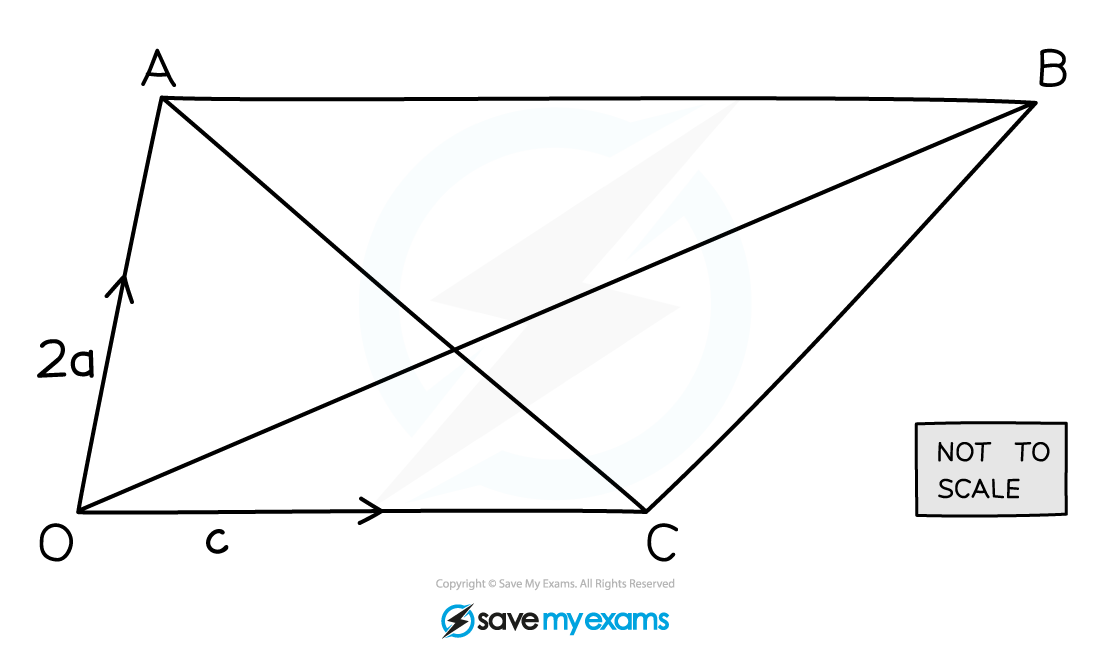Problem Solving with Vectors (Edexcel GCSE Maths) : Revision Note
Did this video help you?
Vector Problem Solving
What are vector proofs?
Vectors can be used to prove things that are true in geometrical diagrams
Vector proofs can be used to find additional information that can help us to solve problems
How do I know if two vectors are parallel?
Two vectors are parallel if one is a scalar multiple of the other
This means if b is parallel to a, then b = ka
where k is a constant number (scalar)
For example,
and
so
b is a scalar multiple of a, so b is parallel to a
If the scalar multiple is negative, then the vectors are parallel and in opposite directions
c is parallel to a and in the opposite direction
If two vectors factorise with a common bracket, then they are parallel
They can be written as scalar multiples
For example
9a + 6b factorises to 3(3a + 2b)
12a + 8b factorises to 4(3a + 2b)
This means
so they are scalar multiples of each other
and therefore parallel
How do I know if three points lie on a straight line?
You may be asked to prove that three points lie on a straight line
Points that lie on a straight line are collinear
To show that the points A , B and C are collinear
prove that two line segments are parallel
and show that there is at least one point that lies on both segments
This makes them parallel and connected (not parallel and side-by-side)
For example, if you show that
then
the line segments AB and BC are parallel
and they have a common point, B
So A , B and C must be collinear
Similarly,
means AC and AB are parallel
and they have a common point, A
so A , B and C must be collinear

How do I use ratios in vector paths?

Convert ratios into fractions
In the example shown, if
then
The ratio 3:5 has 3 + 5 = 8 parts
Always check which ratio you are being asked for
Worked Example
The diagram shows trapezium OABC.
AB is parallel to OC, with .

(a) Find expressions for vectors and
in terms of a and c.
and
so
.
(b) Point P lies on AC such that AP : PC = 3 : 1.
Find expressions for vectors and
in terms of a and c.
AP : PC = 3 : 1 means that
(c) Hence, prove that point P lies on line OB, and determine the ratio .
To show that O, P, and B are colinear (lie on the same line), note that
therefore OP is parallel to OB
and so P must lie on the line OB
If then

You've read 0 of your 5 free revision notes this week
Sign up now. It’s free!
Did this page help you?

